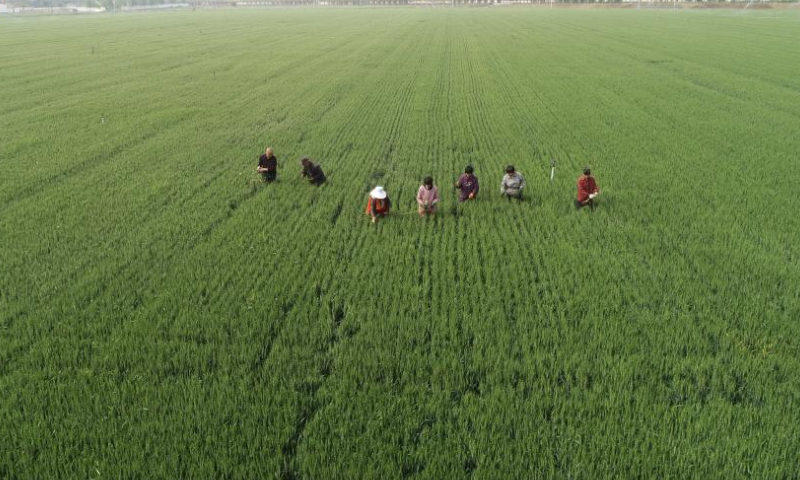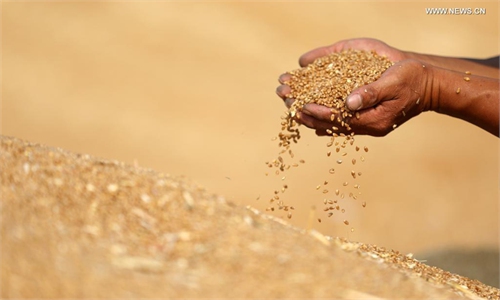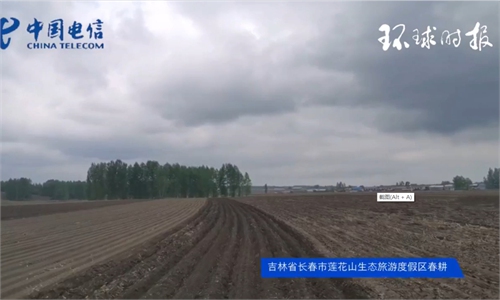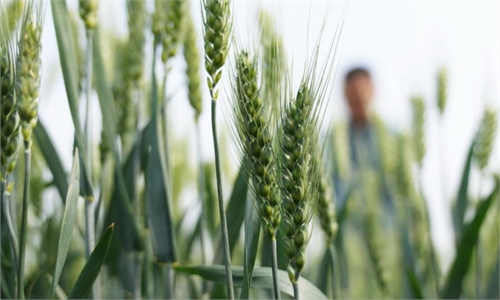
Aerial photo taken on May 10, 2022 shows farmers working in a wheat field in Shenze County, north China's Hebei Province. Hebei has stepped up efforts on farming activities recently. The province's spring sowing area of grain is expected to reach about 1.74 million hectares this year. (Xinhua/Yang Shiyao)
The average return on grain cultivation per mu (0.06 hectares) in 2021 reached its highest level in nearly five years, as food prices remained at high levels since 2021, serving as a motivation for farmer to expand plating areas, a senior official of the National Bureau of Statistics (NBS) said on Monday.Amid growing uncertainties in global food supplies and prices, China has been moving swiftly to expand domestic output of grains to ensure food security, including taking measures to increase income for farmers.
The average return from growing grain reached 824 yuan ($121.31) per mu in 2021, the highest level in five years, Fu Linghui, a spokesperson for the NBS, told a press conference.
Fu said that uncertainties still remain resulting from extreme and unusual weather, as well as agricultural pests and diseases, stressing the importance of managing grain production to ensure the nation's food security.
But China's overall grain production has been improving due to favorable conditions, according to the spokesperson. "Since the beginning of this year, with efforts of all parties, the overall situation of our country's grain production is on an improving trend," Fu said.
For instance, the production of summer grain continues to improve, while spring sowing activities are progressing smoothly. The nation has also been implementing support policies and measures for grain production, such as increasing the minimum purchase prices for rice and wheat.
Fu said that the impact on the country's spring plowing caused by domestic COVID-19 outbreaks is limited, as responsible authorities have been stepping up efforts to tackle obstacles, including logistics bottlenecks.
The main producing areas in China have purchased a total of 370.5 billion jin (185.25 million tons) of autumn grain, an increase of 50 billion jin year-on-year from 2021, marking a successful conclusion of the national autumn grain purchase, the National Food and Strategic Reserves Administration announced on May 12.
Global Times



